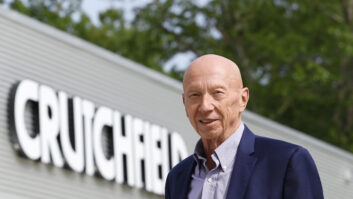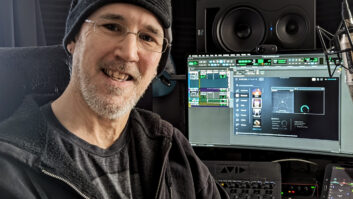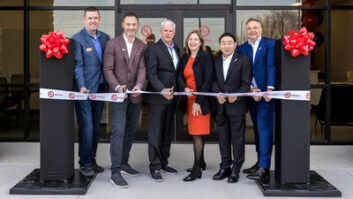
More than 7 billion people – nearly 90% of the global population – own a cellphone, many more than one. Nearly 1.3 billion smartphones were sold around the planet last year alone, and even that staggering sales total is down around 10% from 2021. Americans spend between 4-5 hours a day on their smartphone, addictively checking it nearly 100 times a day. Simply put, the cellphone is the best-selling, most popular, most visible, and most used consumer technology device in history.
Considering the cellphone’s ubiquity, it shouldn’t come as a surprise that the mobile phone phenomenon was launched 50 years ago, on April 3, 1973.
The 50th anniversary of the cellphone was supposed to be commemorated on April 3 this year at a gala “Celebrate the Call” event, as well as to honor the “father” of the cellphone, Marty Cooper. The gala, scheduled to be held at the site of the first public calls at the Hilton Hotel Midtown in New York, was being organized by the Tesla Science Center at Wardenclyffe.
On March 3, however, organizers postponed the gala. According to organizers, the event was to have included the dedication of a historical marker on the sidewalk in front of the Hilton marking the location of the first public calls. However, the “application for the historical marker became lengthier and more complicated than anticipated,” the organizers explained in a statement. At its March 20 public meeting, the New York City Public Design Commission voted down the placement of the plaque.
Being a Brief History of the Cellphone
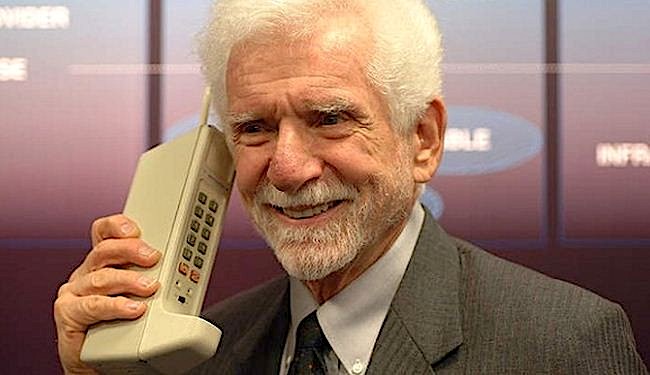
It is ironic that bureaucratic red tape has held up the cellular phone’s 50th-anniversary celebration, given the technical, government and corporate bureaucratic roadblocks overcome in just six months to successfully design the first cellphone in the first place.
The idea of a cellular network was actually old news by the early 1970s. An AT&T engineer with the unlikely appropriate name Donald H. Ring first laid out the basics of a network made up of small geographic radiophone “cells” in a memo dated December 11, 1947. However, the only “mobile” phones were car phones – no one envisioned a phone you could put in your pocket except science fiction writers. And car phones wirelessly connected only through a single antenna that covered a large municipal area. The limited number of frequencies available through a single antenna base station limited the number of car phone customers.
Ring’s solution: create an interlocking network of smaller areas, or cells, each served by its own base station, each cell reusing the same set of limited frequencies as neighboring cells.
But there was a problem: how does the system hand off calls as someone drove from one cell into the next?
In the mid-1960s, call handoff and other technical problems were finally overcome at AT&T by a team led by Joel S. Engel and Richard H. Frenkiel, who laid out plans for an 800MHz cellular network. AT&T petitioned the FCC for the spectrum and the licenses to build this new cellular network nationwide. Just as it was the monopoly supplier of telephones in the home market, AT&T believed it would also be the exclusive consumer cellular car phone equipment supplier.
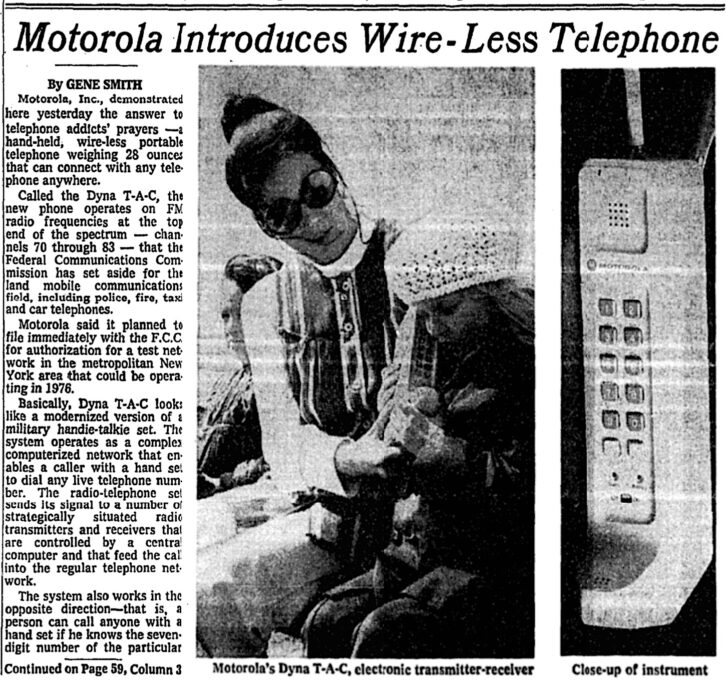
If AT&T were awarded this cellular monopoly, however, Motorola’s consumer car phone equipment business, in which is held an estimated 60% market share, would evaporate.
To forestall AT&T procuring a cellular monopoly, Motorola demonstrated its own long-germinating 900MHz car phone system for AT&T and the FCC on October 25, 1972. But John Mitchell, VP and general manager of Motorola’s communication business, and Marty Cooper, VP and general manager of the company’s communications systems division, both realized that AT&T would win any head-to-head cellular network battle. Instead, Motorola would have to prove to the FCC that an AT&T monopoly would stifle cellular innovation. But how to prove this? Motorola had to come up with something flashy, something that caught the imagination of the press and the public – and the FCC.
“What the world really needs,” Cooper remembers telling Mitchell, “is a hand-held portable phone.” Mitchell agreed.
A new round of FCC hearings to consider AT&T’s proposal was scheduled for the following May. That left Motorola six months to successfully develop a working handheld cellular phone.
Cellular Crunch Time
Just after returning from the Thanksgiving holiday in late November 1972, Cooper approached Motorola’s lead industrial designer Rudy Krolopp to design the phone. As lead engineer, Cooper appointed a surprised but calm Don Linder, who, on December 4, quickly sketched out a basic schematic for the portable.
Linder had good reason to be composed. As the leading car phone equipment maker, Motorola was constantly searching for ways to shrink down bulky car phone components that could only be installed in a car’s trunk. Also, fortunately, Motorola was already deep in the development of the first wireless phone integrated circuits. The first chips had been earmarked for Motorola’s next-generation car phone models, but Cooper ordered the first two chips from the company’s Phoenix fab be sent to Linder’s team instead.
In the meantime, Linder and his engineers had to shrink, invent, or re-invent every major car phone component. The engineering and design teams worked furiously over the winter to squeeze the literally thousands of new or shrunken parts and components into Krolopp’s hand-held case and get them all connected and working together.
Since Motorola engineers had just two chip sets, two prototype wireless phones were built. Because of component, design, and time constraints, the teams had to settle on an odd shape for their first phone, 1.9 inches wide, 3.5 inches deep, and 9 inches tall, not including the antenna, and weighing 2.8 pounds. Down its long skinny face were arrayed two vertical rows of number buttons instead of today’s more familiar 3 x 4 array. Each “DynaTAC” wireless phone, short for “dynamic total area coverage,” could access 380 duplex channels, and the rechargeable NiCAD battery could power 12 three-minute calls and last 12 hours in standby mode. One shocked Motorola executive described the successful DynaTAC development effort as “superhuman.”
The First Public Calls
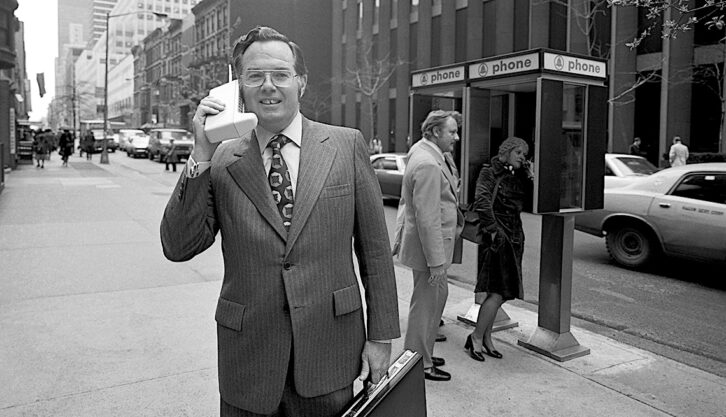
Of course, there were no cellular networks yet, so Linder and his team built a 900MHz base station and antenna array, which were then shipped to New York and installed atop the Burlington Building, now the Alliance Capital Building, at 1345 Sixth Ave., across West 54th Street from the Hilton, where the press demonstrations would be held.
For the press event, Motorola rented out the Hilton’s east Penthouse, used by celebrity couple Elizabeth Taylor and Richard Burton when they were in town.
Mid-morning on an overcast and humid Tuesday, April 3, 1973, Cooper and Mitchell introduced the whole idea of a portable phone to about 50 cynical reporters, who were soon convinced after making wireless calls of their own. One reporter was stunned when he was able to successfully call a landline phone in Australia.
Cooper and Mitchell then went down to Sixth Avenue and West 54th Street to make some “public” calls, posing for photographers in front of suddenly old-fashioned pay phones. Cooper is credited for making this first “public” call.
The following day brought a flood of national coverage, just as Cooper and Mitchell hoped. In a rather prescient lead paragraph, the AP reporter noted, “There may be no way to escape the strident summons of a telephone in a few years if a portable telephone developed by Motorola, Inc. catches on.”
Cooper and Mitchell had accomplished their goal of demonstrating that cellular competition was the better course. It would take a decade, but the FCC ultimately decided to open both the network and consumer handset markets to a multitude of innovative companies, creating what has become a vibrant billion-dollar business and a ubiquitously connected population.




